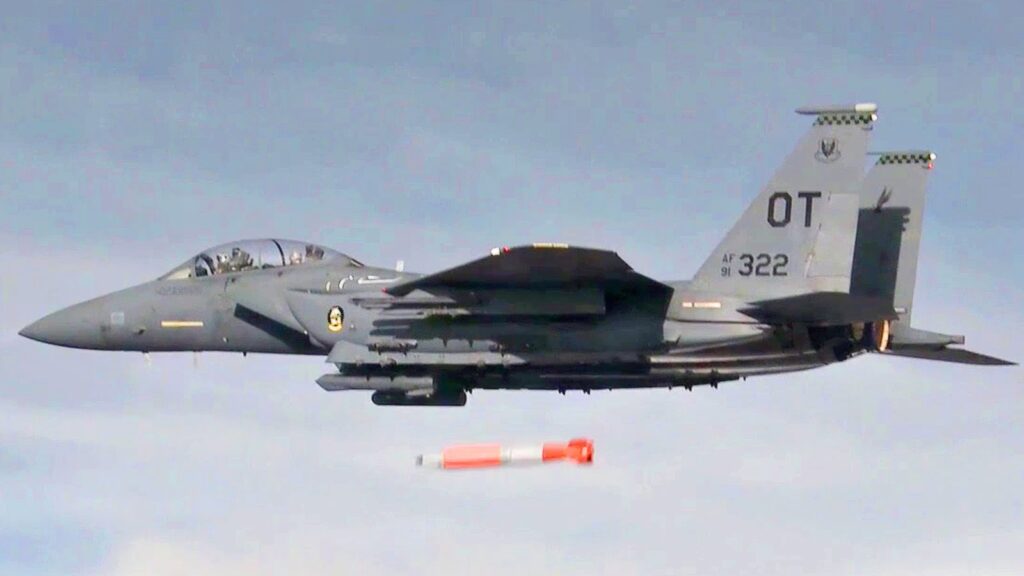
Washington, D.C — — Modernizing the nation’s strategic nuclear deterrence and negotiating new treaties to cap nuclear weapons are two major challenges facing the next President of the United States.
“Though the Cold War days are in the past, those nuclear weapons are still with us,” said William Ostendorff, the former principal deputy administrator of the National Nuclear Security Administration in the administration of President George W. Bush, speaking at a forum just before the November election.
“There remains a clear and compelling need to educate Congress and the public on the importance of deterrence. These ideas are independent of whom the next president is. It’s too important to take as a partisan issue,” he said.
While the U.S. has the world’s largest military, several components of the nuclear arsenal are aging, creating a pressing need for modernization of the nation’s nuclear forces, said experts at the Advanced Nuclear Weapons Alliance Deterrence Center (ANWA), a nonpartisan organization that advocates modernizing America’s strategic nuclear deterrence. They consider modernizing the aging infrastructure a nonpartisan issue.

“It will take 20 to 30 years to fully modernize all of our platforms,” said David Cherington, managing director at ANWA. “That’s a commitment across multiple administrations.”
One example cited by Cherington is the Ohio-class submarine, first built in 1976 and now gives the Navy’s 14 ballistic missile submarines. By 2031, the Navy wants to replace them with 12 modern new ballistic submarines, which will be called the Columbia-class submarine. The B-21 bomber, a stealth bomber, is expected to enter service in 2025 and begin to replace other Air Force bombers, including the familiar B-52.
Nuclear deterrence is maintained by a “nuclear triad” of three platforms: submarines armed with ballistic nuclear missiles, land-launched intercontinental ballistic nuclear missiles and strategic bombers armed with nuclear bombs.
In addition to the “triad,” ANWA said other organizations associated with nuclear deterrence must be included in modernization efforts. That includes the NNSA and the nuclear command, control and communication infrastructure, which provides the early warning of any nuclear attack from an American adversary.

“Nuclear command, control and communication ensures the confidence in our deterrence structure,” Ostendorff said. “It is front and center in that.”
The facilities that help prepare nuclear weapon fuels are also aging, said Jeff Crater, managing director-cofounder at ANWA, including those in Oak Ridge, Tenn.
“One facility has been in use since the Manhattan Project,” Crater said, referring to the top secret World War II program that developed the first U.S. nuclear weapons, including “Fat Man” and “Little Boy,” the two bombs dropped on Japan that hastened the country’s unconditional surrender.
Another issue facing the next president is the anticipated expiration of a treaty with Russia to cap strategic nuclear weapons.
The treaty, called the New Strategic Arms Reduction Treaty (START), was signed in 2010, following the START I treaty signed in 1991 and expired in 2009. New START set strategic nuclear stockpiles to the lowest levels since the 1960s, limiting the number of deployed strategic nuclear weapons to about 1,550 for each country, according to the Brookings Institute.
New START is set to expire in February 21, 2021, though negotiators from the U.S. and Russia had been working on renewing the deal.
President-elect Donald Trump tweeted in December 2016 that the United States “must greatly strengthen and expand its nuclear capability until such time as the world comes to its senses regarding nukes.” He also called the New Start agreement negotiated by the Obama Administration “a bad deal.”
U.S. policy on nuclear weapons “is not something that should be altered with a dangerously vague tweet,” Rep. Adam Smith (D-Wash.), the then-ranking member on the House Armed Services Committee, wrote in a Dec. 24, 2016 post on his Facebook page. “The fact is we do not need another nuclear arms race.”

“There is significant uncertainty on the future of the treaty,” said Madelyn Creedon, who served as the principal deputy administrator of the National Nuclear Security Administration in the administration of former President Barack Obama.
One point Trump pushed in negotiations was to bring China into the treaty, which operates its own “triad” of nuclear weapons. However, China resisted joining the negotiations, Creedon said, as their nuclear arsenal, totaling about 300 weapons, is much smaller than either the U.S. or Russian arsenals.
“China is a separate issue,” Creedon said, arguing that trying to include China in the New START treaty could derail the overall negotiations. “The U.S. and Russia have 90% of the world’s nuclear weapons. At the least, we must get the caps that exist in the New START treaty extended.”
(Edited by Fern Siegel and Bryan Wilkes)
The post Nuclear Arms Experts List Modernization, Treaties as Priorities for Incoming President appeared first on Zenger News.






